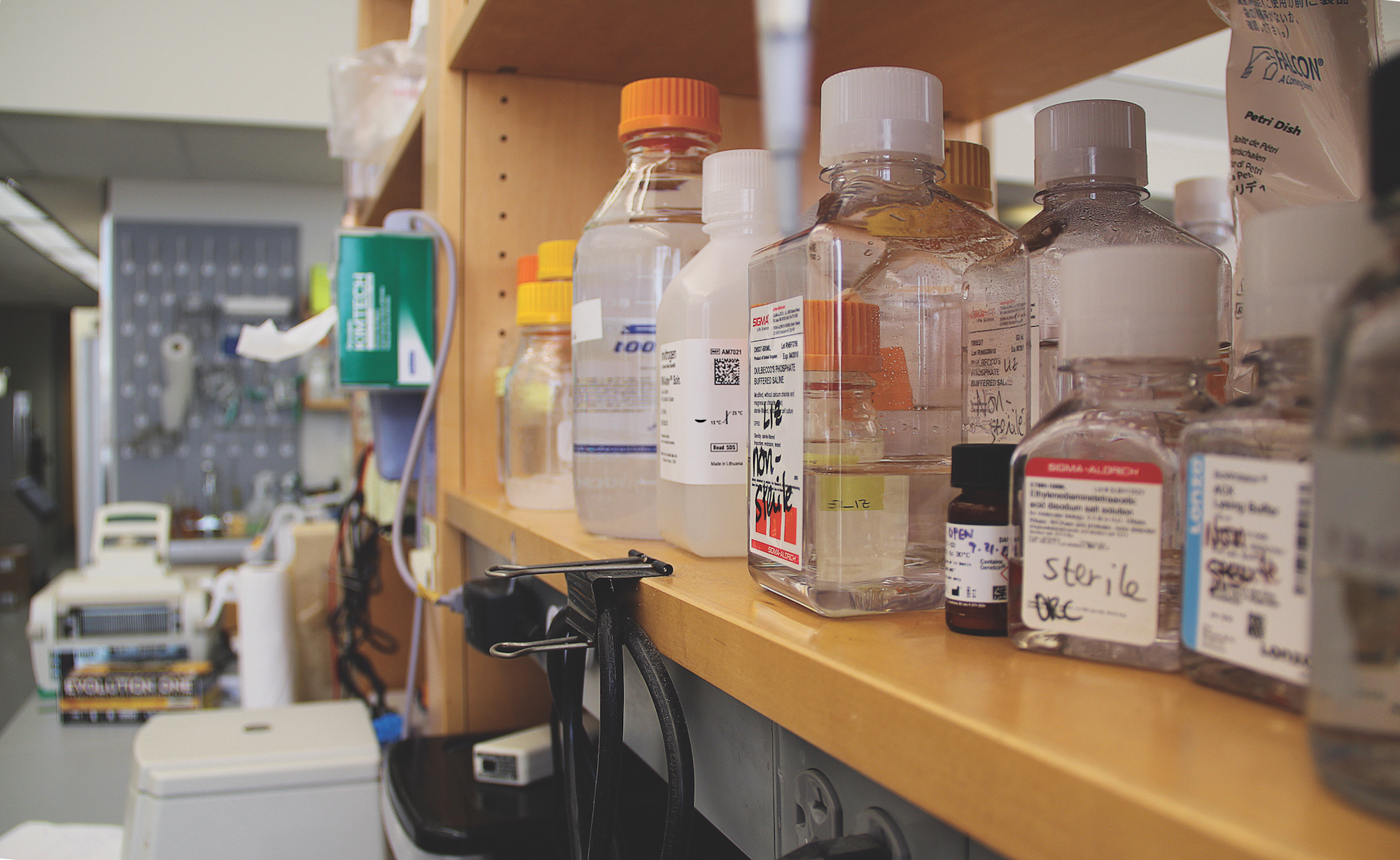As winter settles in, perhaps the only seasonal “foods” more iconic than hot chocolate and s’mores are cough drops and tea. Why do some people want to weather colds holding steaming bowls of comforting soup, while others suffer queasy stomachs and leave dinner plates untouched? The seemingly paradoxical appetite changes associated with sickness are a well-recognized and evolutionarily ancient trait, but up until now scientists could only speculate about their cause and purpose.
Yale researchers led by Ruslan Medzhitov, professor of immunobiology at the Yale School of Medicine, have found that the answer to this puzzle lies with the causes of infection. The key insight of their research is that not all sicknesses are created the same. Fighting viral versus bacterial infections requires completely opposite nutritional needs. The findings of their research hold the potential to transform how healthcare approaches nutrition in illness.
The researchers began by tracing out how anorexia, or loss of appetite, affects disease outcome in bacterial infections. Researchers infected mice with Listeria monocytogenes, a common cause of food poisoning. Mice that were fed during infection died; those who did not eat lived.
Similarly, the researchers infected mice with influenza virus, the cause of the flu, and again varied caloric intake. Now the fortunes were reversed: fed mice survived viral infection while those that did not eat mostly died. These trends held true even not only for infection, but also when the experiments were repeated for bacterial and viral inflammation—whole body immune activation.
The real story linking nutrition and disease, however, emerged in the search for the nutrient causing the outcomes. Between protein, fat, and glucose, only glucose was required to induce the complete effects of caloric intake. Moreover, blocking glucose utilization rescued bacteria-infected mice while killing virus-infected mice.
Interestingly, glucose does not change the number of pathogens or the strength of the immune response. Instead, glucose shapes the role of metabolism in the body’s tolerance of the immune response. Metabolism refers to all the chemical reactions needed to sustain life; use of the immune system comes at a price.
“Depending on the type of inflammation or infection, there are different metabolic processes that are necessary to survive the critical illness condition,” explains Medzhitov. Specifically, bacterial and viral infections generate different kinds of tissue damage depending on the presence of glucose.
While glucose dominates metabolism in the fed state, during a fasting state the body begins breaking down fat stores to utilize molecules called ketone bodies for energy. Bacterial infections cause an immune response that releases reactive oxygen species, also known as ROS or “free radicals,” which kill pathogens as well as damage host cells. Glucose exacerbates this negative side effect while ketone bodies from starvation are protective. A parallel exists for viral infection.
In response to the cellular damage caused by viral infection, the unfolded protein response (UPR) targets and eliminates cells producing abnormal proteins. This process is regulated by glucose—without glucose, this stress-induced response leads to excessive cell damage.
“We discovered that by blocking glucose utilization in viral infections we prevented a normal response against viruses and instead caused a response that ended up being destructive for the host,” states Dr. Andrew Wang, first author and clinical fellow in medicine. Shockingly enough, the battleground where glucose decided life and death was not in the heart or the lungs, as may be expected for a pulmonary illness like the flu, but rather in the brain. PET scans and tissue studies revealed damage at critical sites in the brain following bacterial and viral infection. Absence of glucose increased neuronal damage in viral infections while for bacteria the opposite was true. The damage was once again linked to either over-activity the UPR or overproduction of ROS.

Medzhitov and his team hope that these new findings can improve nutrition for the acutely ill. Currently, all ICU patients are fed intravenous liquid food that is 30-60% carbohydrates, but Medzhitov’s study suggests that these formulations need to be adjusted based on the cause of illness. The Yale team is currently preparing clinical trials that test that premise. Future studies by the team will continue using mouse models to study different types of infections, including parasitic and fungal. Their work will contribute to new holistic models of healthcare treatment.
“The general implication is that there is a certain wisdom to the body’s reactions and our preferences during illness, and many of these are protective,” says Medzhitov. In sickness at least, we can all benefit from listening to our bodies.
